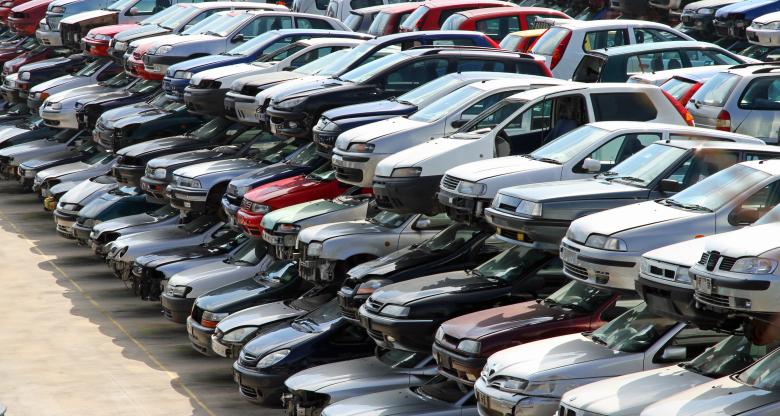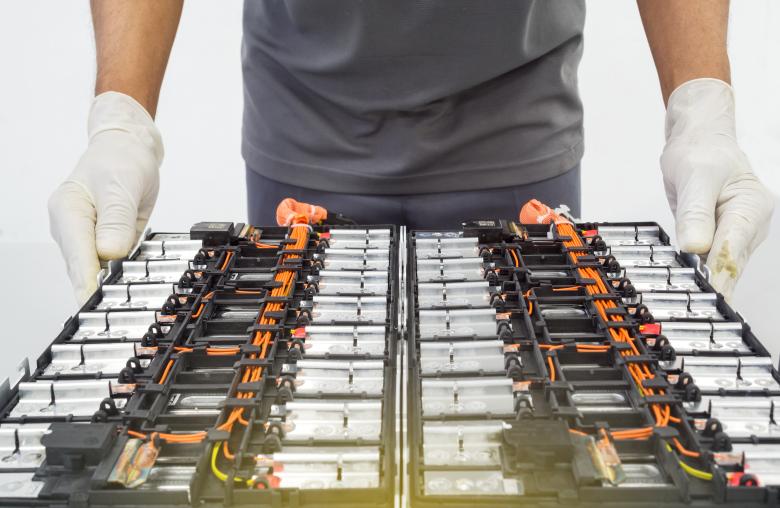In the context of the transition to electromobility, the demand for battery raw materials will increase considerably, and some raw materials could experience temporary shortages, as mining production capacity cannot be increased quickly.
Circular economy strategies, such as recycling, reuse, or carpooling, therefore seem to be an effective means of reducing dependence on international supply chains, but this requires forecasts regarding both supply and demand, which represents a challenge at the European level.
The European Union and member states already have access to relevant data. In France, for example, OFREMI conducts prospective work concerning mineral resources and published in December 2024 a study(in french) on the critical material needs for batteries for French electric mobility.
The study presented here aimed to determine, at the European level, the key factors that could influence the supply of raw materials from the European "urban mine" for the manufacture of batteries for electric vehicles.
Urban Mines
In addition to relocating certain activities to Europe, the concept of the "urban mine" allows for the development of a circular economy that combines recycling, shortened supply chains, potential for reducing environmental impacts, and optimized waste management.
Indeed, an urban mine generally refers to the recovery of raw materials from waste of anthropogenic origin (household appliances, buildings, electronic equipment, etc.) for reuse or recycling, thus offering an ecological alternative to the extraction of primary natural resources.
Regarding electric vehicle batteries, the challenge is all the more important as the supply of the raw materials concerned is likely to be disrupted in the coming decades. Redirecting part of the supply towards recycling allows for:
- Securing the supply of materials for the energy transition.
- Reducing dependence on raw material imports.
- Decreasing the environmental impact of electric mobility.
A Developing European Potential
European legislation includes two main regulatory tools to reduce dependence on non-European raw materials:
The European sustainability rules for batteries and waste batteries aims to limit the carbon footprint of batteries and the use of raw materials from non-EU countries. It imposes targets at different horizons, such as:
- The percentage of waste collection.
- The proportions of recovery of different metals.
- The rate of recycled metals contained in new batteries.
- Various sustainability and safety criteria.
The Critical Raw Materials Act aims to strengthen the resilience of European supply chains, with 5 main pillars:
- Definition of critical and strategic materials.
- Development of European capacities for mining, recycling, and metal refining.
- Improvement of resilience through monitoring of strategic stocks.
- Investment in research and innovation.
- Promotion of recycling.
The Method Used
The Material Flow Analysis (MFA) methodology, integrating multiple scenarios and sensitivity analyses, is widely used by scientific communities working in earth sciences, particularly at BRGM, which has strong expertise in this field. This method is used to evaluate the lifespans and rate of metal loss in the economy, for example, and is particularly relevant for assessing potential material flows from the circular economy of batteries.
The objective of this prospective study is twofold:
- Identify the main levers for exploiting the potential of the urban mine for the supply of battery raw materials (Lithium, Nickel, Cobalt, Manganese, and Graphite) in the EU.
- Improve the transparency of material flows by distinguishing:
- Recycled materials from battery production waste.
- Those from end-of-life batteries.
- The number of recycling cycles performed.
The study also analyzes the feasibility of the regulatory targets for recycled content set by the EU for batteries.
Scenarios
This study proposes several possible or desirable scenarios, some of which carry a very optimistic vision of the deployment of the circular economy.
Scenario 1 – baseline reference
This scenario is aligned with the goal of greenhouse gas emissions neutrality. NCX* type batteries dominate the market. Used batteries would then become an important source of materials from 2042. It predicts an increase in demand for the five main raw materials until 2032, followed by a decrease related to the increase in recycling of manufacturing waste.
*A designation for the Lithium-Nickel-Manganese-Cobalt-Oxide (NMC) and Lithium-Nickel-Cobalt-Aluminium-Oxide (NCA) battery types.
Scenario 2 – global electric vehicle market
It aligns with the objectives of the International Energy Agency (IEA) Stated Policies Scenario (STEPS). The NCX type battery dominates the market in the EU.
Scenarios 3 & 4 – diversification of battery types
Scenario 3: proliferation of LFP batteries that would dominate the European market, previously dominated by NCX type batteries.
Scenario 4: introduction of SSB batteries in the European market from 2035.
Scenario 5 – shared mobility
From 2035, shared mobility would reduce the demand for raw materials by 26 to 54% by 2050, potentially making the European urban mine self-sufficient.
Scenario 6 – recycling and collection rates
Based on the objectives of the European regulation, with progressive rates for 2027 and 2031, aiming for 90% collection of end-of-life batteries from 2030.
Scénario 7 – second life of batteries
Second life strategies can delay the end of life of batteries and therefore the availability of secondary materials, prolonging dependence on primary supply chains but also reducing demand.
Encouraging Projections
Achievement of Political Objectives
The recycled content objectives set by European battery regulation for 2031 and 2036 can be achieved in almost all scenarios, except for cobalt in the second-life battery scenario, which delays the arrival of end-of-life batteries for recycling.
Dependence on Battery Production in Europe
The scenarios take into account the recycling and production capacities of batteries by gigafactories in Europe. Battery production generates manufacturing scrap that is subsequently recycled. This battery production scrap is an essential resource for meeting European recycling targets. In other words, recycling requires a battery manufacturing industry in Europe to function.
Rethinking Technological Choices
The choice of battery technologies strongly influences the demand for raw materials. The adoption of alternative technologies, such as LFP (lithium-iron-phosphate) batteries or solid-state batteries (SSB), could reduce dependence on certain critical materials, notably cobalt and nickel. Additionally, promoting shared mobility could also reduce the total demand for batteries, which would further decrease the pressure on raw material supply. However, these changes would require adjustments in recycling processes to adapt to the new chemical compositions of batteries.
Recycling and Reuse
Collection and recycling rates play a key role in the supply of secondary materials. Although European regulations already impose high rates, improving these rates could maximize the exploitation of the European "urban deposit." Increasing collection and recycling would reduce dependence on primary raw materials but would require investments in adapted recycling infrastructure and incentive policies.
Quality of Recycled Materials
One of the challenges of battery recycling is the quality of recovered materials. In this study, it is assumed that recycled materials have a quality equivalent to primary materials. However, in practice, recycling processes can lead to the presence of impurities, which could limit their reuse in new batteries. However, until 2050, the proportion of materials having undergone several recycling cycles would remain relatively low (less than 6%), making quality degradation negligible in the short term.
A possible reduction in demand, but a fragile assumption
This new prospective study shows us a possible decrease in total demand in all scenarios, based on two main hypotheses:
- Stable demand for vehicles until 2050.
- A reduction in the waste rate in battery production.
The supply of secondary materials depends on several parameters, including the rate of production waste, collection and recycling rates, as well as the second life of batteries. Shared mobility also plays an important role and would lead to a significant decrease in the demand for primary raw materials.
To conclude, the study shows that the supply of raw materials for battery manufacturing cannot completely do without primary sources in the medium term, but industrial policies and consumer behaviors could have a significant impact. By 2050, secondary material sources could represent between 35% and 99% of total demand (depending on the material and scenario), in a system optimized for recycling. The scenario with a very strong development of battery reuse in a second life could result in a situation where the EU's recycling objectives would not be achievable, but would significantly reduce the demand for raw materials. These results show the full interest of prospective studies such as this one, which allow for the comparison of public policy projects and the setting of quantified objectives.





